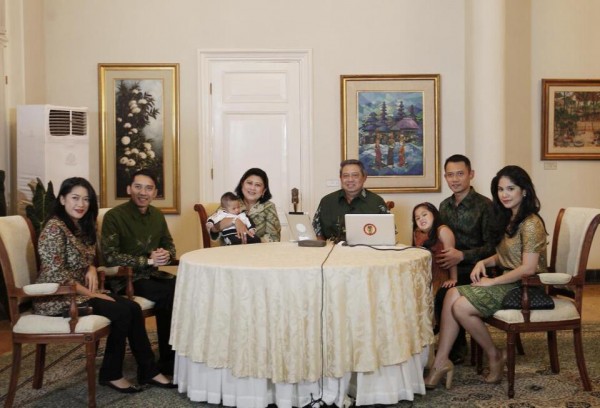Sidomukti and Explanations – Sidomukti batik is one type of palace batik, which is usually made from natural soga dye. The color of soga or brown on Sidomukti batik cloth is a classic batik color or like the original. Sidomukti batik comes from Solo, Central Java, with its original and ancient motifs. The Sidomukti batik motif is a development of the Sidomulya batik motif with a white background originating from the Kartasura Mataram era, replaced with a ukel background by Paku Buwono IV.
The definition of Sidomukti batik is translated from the origin of the word. Sidomukti comes from the word “sido” which means to be / to be or continuously, and “mukti” which means noble and prosperous. So the meaning of Sidomukti batik is to be noble and prosperous. Batik motifs starting with “sido” contain the hope that wishes can be achieved soon. Sidomukti batik contains hope to achieve inner and outer happiness. The use of Sidomukti batik is in Javanese traditional wedding ceremonies, which are used at the siraman, kerikan, Ijab, and Panggih stages. Sidomukti batik cloth is also called palm cloth or pair of cloth.

Sidomukti batik motif has a very philosophical meaning. This meaning shows the depth of understanding of local cultural elements. Until now, these values still survive, as well as batik Sidomukti. Batik Sidomukti as a symbol of hope and prayer is poured in its motifs, which is in the form of ornaments of filler and art. Some of the ornaments on Sidomukti batik include:
- Main Ornament with Butterfly
The main ornament is a butterfly as a symbol of beauty and high hopes. Butterflies are beautiful animals in beautiful shapes and colors and can fly high as a symbol of hope that soars high.
- Main Ornament in the Shape of Butterfly Wing
Sidomukti batik motif has a very philosophical meaning. This meaning shows the depth of understanding of local cultural elements. Until now, these values still survive, as well as batik Sidomukti. Batik Sidomukti as a symbol of hope and prayer is poured in its motifs, which are in the form of ornaments of filler and art. Butterflies, like birds, can fly high to represent the world above and the wind. In the teachings of the four elements of life, the wind is a symbol of justice and humanity, which is represented by white.
- The main ornament is a building in the form of a throne or throne
Throne ornaments depict a high position and throne. A throne is a symbol of hope for a high position and degree, noble and respected by many people as well as a leader or king.
- Meru Shaped Main Ornament
Meru is a mountain, land is also the earth. The ornament in the form of a mountain is a symbol of splendor, and majesty like a big mountain and looks dashing even though it looks from a distance, comes from the teachings of the four elements of life called sangkan paraning dumadi or the origin of life, besides fire, water, and air. In Javanese Hindu culture, meru is used to describe a high mountain peak where the gods reside. Meru is represented by the color black, if it is not controlled it will bring out wrath, if it is controlled it becomes the nature of eternal prosperity.
- Main Ornament in the Shape of Flowers
Flowers as a symbol of beauty and beauty. The shape of the flower is found in almost every element used in traditional ceremonies because it has a good meaning.
Flowers are plants that stick in the ground or the earth as a foothold, can be interpreted as something beautiful is a firm and strong foundation and grip of life, just as flowers remain beautiful and strong because their roots are stuck tightly, even if blown by the wind or other forces that can destroy it.
Isen-isen on motifs in the form of dots, a combination of dots and lines, as well as lines, function to fill ornaments and motifs or fill areas between motifs and ornaments. The isen-isen in Sidomukti batik include:
- Sawut are soft lines that are tightly lined as fillers for leaves, bird tails, and so on
- Cecekan is small, tight, or tenuous dots that fill the ornament area.
- Ukel is a small circle of curls and the like.
- Cecek pitu, namely the points that collect as many as seven pieces, usually in a circular shape.
The color of soga in Sidomukti batik is a substitute for orange, which is a combination of red and yellow. Before there were chemical dyes, the colors on batik cloth used natural dyes from plants which could only produce a brownish red color that was close to orange. The brownish red color is obtained from the bark of the noni tree, high, tegeran, jambal and is called “soga”. The red color element in the concept of Qibla papat lima pancer symbolizes lust, what is meant by lust is not only related to evil but can also be interpreted as lust to do good deeds with a high and brave spirit.
Sidomukti batik is a batik motif that is mostly made by batik craftsmen. The uniqueness of Sidomukti batik as well as its distinctive pattern and strong attachment to Javanese culture make Sidomukti batik much sought after by batik lovers and Javanese culture connoisseurs. The origin of Sidomukti batik is indeed from solo, but now the production of this batik tulis has spread to other cities. Sidomukti batik types can be distinguished from the producing area. This is because each batik-producing area has characteristics of Sidomukti batik that are different from one another, including Sidomukti batik from Solo, Sidomukti batik from Yogyakarta, Sidomukti batik from Pekalongan, and Sidomukti batik from Magetan.